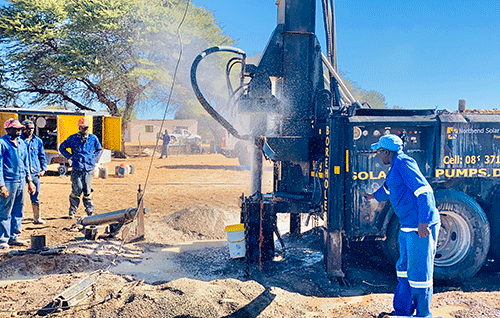The overall water supply situation remains a major concern in many areas of the country due to poor rainfall received for the season. As such, most water catchment areas have already dried up due to insufficient water inflow.
According to the agriculture ministry executive director Ndiyakupi Nghituwamata in a recent publication titled ‘Crop Prospects, Food Security and Drought Situation Report – July 2023’, the water supply situation in Omaheke region remains unresolved in some areas. “The region has a number of broken boreholes especially in the northern side of the region (Eiseb, Talismanus, Otjinene and Epukiro) due to wear and tear, leaving both human and livestock in critical water shortages,” Nghituwamata said. Omaheke is one of the regions declared drought-stricken during the current financial year.
Delivering his recent state of the region address, governor Pijoo Nganate stated that the livestock market prices have slowed down to the lowest level in 10 years. However, the livestock production in the region remained steady and the livestock condition has dropped from good to fair on average.
“Very poor rains were received in the region with an average of 200mm, and lowest records below 100mm in the south of the region while the highest were just below 300mm and patchy in the northern parts of the region,” noted the governor.
Regarding rural water supply in the region, Nganate stated the directorate of water supply and sanitation coordination has implemented two significant programmes for rural communities, where 13 boreholes were drilled and materials were procured. The materials to provide water to communities included seven solar pumps, six diesel-driven engines, thirteen water tanks, 15 HDE pipes, and 169 galvanised pipes. Out of 13 drilled boreholes, he said only eight were successful. Due to water scarcity and deep-water sources found in the region, Nganate at the time stated 38% of the boreholes drilled were unfortunately dry.
National dam levels
Nghituwamata added in the report that as of 10 July 2023, the total content of the dams stood at 66% compared to 80% during the corresponding period last year.
“This notable decrease is attributed to the insufficient rainfall received during the 2022/23 rainfall season, which resulted in a reduced inflow of water into the dams, and a substantial decrease in their water levels. As such, only Neckartal and Goreangab dams are above 90% with 91% and 101% of their full capacity, respectively,” continued the executive director. The report states that other reservoirs such as Swakoppoort, Friedenau and Naute are at 65%, 67% and 60% of their holding capacity, respectively, whereas Oanob stood at 57%. The rest of the reservoirs are below 40%, with Omatako, Otjivero silt, Bondels and Omaruru delta completely empty.
Recommendations
To provide some solutions, Nghituwamata advised government, through the Office of the Prime Minister, to continue with the provision of the drought relief measures to households that are faced with food insecurity in Kunene, parts of Omusati and Erongo regions, Omaheke, //Kharas and Hardap regions, until the situation normalises.
“Government through the agriculture ministry to continue with construction, rehabilitation and excavation of earth dams and boreholes in areas where communities are faced with water shortages,” she mentioned. – mndjavera@nepc.com.na


